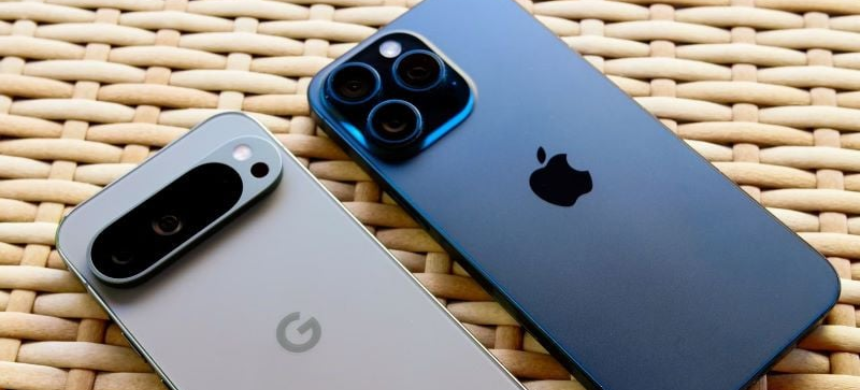Google recently introduced the Pixel 9 Pro on August 13, alongside three other new Pixel devices. Just a few weeks later, Apple unveiled the iPhone 16 Pro during its “It’s Glowtime” event on September 9. This raises the question: Can the Pixel 9 Pro rival Apple’s strong presence in the high-end smartphone market?
Design and Display
The iPhone 16 Pro and Pixel 9 Pro both feature 6.3-inch screens, making their sizes and weights quite similar. However, their designs differ significantly. The Pixel 9 Pro sports a redesigned camera bar that protrudes from the back, with flat sides echoing Apple’s design language. Conversely, the iPhone 16 Pro maintains its classic square camera bump with three lenses.
Also Read: Samsung’s Playful Jab at iPhone 16 Launch: “Let Us Know When It Folds”
Both devices have LTPO displays with a 120Hz dynamic refresh rate. The iPhone 16 Pro reaches a peak brightness of 2000 nits, while the Pixel 9 Pro boasts up to 3000 nits, making them competitive in display performance.
Performance and Software
As AI becomes increasingly important in smartphones, the iPhone 16 Pro is powered by Apple’s new A18 chipset, which includes an upgraded Neural Processing Unit (NPU) for enhanced machine learning. Apple claims a 20% improvement in cooling for better sustained performance.
The Pixel 9 Pro features the Tensor G4 chipset, optimized specifically for AI tasks. While it has 16GB of RAM compared to the iPhone’s 8GB, this reflects the different demands of iOS and Android. Both devices support the latest Wi-Fi 7 standard.
Apple’s event highlighted its AI capabilities, including Visual Intelligence and Photographic Styles, though these features are still in beta. In contrast, Google’s AI features are fully implemented, and Pixel devices benefit from seven years of OS updates, surpassing Apple’s five-year update policy.
Camera Capabilities
The iPhone 16 Pro features a 48MP ultrawide camera with macro capabilities and a 5x optical zoom telephoto lens. It also introduces a new Camera Control button mimicking a traditional shutter button.
The Pixel 9 Pro offers a 50MP main camera, a 48MP ultrawide camera, and a 48MP periscope zoom lens with 5x optical zoom. Google’s computational photography will likely enhance image quality, with a more detailed camera comparison to follow once sample photos are available.
Battery and Charging
Apple has not revealed the exact battery capacity of the iPhone 16 Pro, but it is expected to be smaller than the Pixel 9 Pro’s. Historically, Apple optimizes battery performance despite smaller capacities. Charging speeds are similar, with the iPhone 16 Pro reaching 50% in 35 minutes, while the Pixel 9 Pro offers 45W charging and reaches 55% in 30 minutes.
Final Thoughts
Both the iPhone 16 Pro and Pixel 9 Pro emphasize AI-driven innovations, making the competition a matter of software implementation rather than just hardware. As AI becomes central to both brands’ strategies, the ultimate comparison will hinge on their machine learning and computational features.
It’s too early to determine a definitive winner, but the competition is expected to center on advancements in AI, machine learning, chatbots, and large language models.











